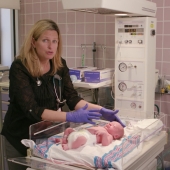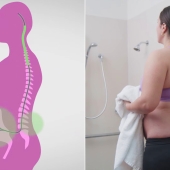Mother-to-child transmission of HIV is the spread of HIV from an HIV-infected woman to her child during pregnancy, childbirth (also called labor and delivery), or breastfeeding. Mother-to-child transmission of HIV is also called perinatal transmission of HIV.
HIV medicines reduce the amount of HIV in the body. Having less HIV in the body reduces a woman's risk of passing HIV to her baby during pregnancy and childbirth. Having less HIV in the body also also protects the woman's health.
Some of the HIV medicine passes from the pregnant woman to her unborn baby across the placenta (also called the afterbirth). This transfer of HIV medicine protects the baby from HIV infection, especially during a vaginal delivery when the baby may be exposed to HIV in the mother’s blood or other fluids. In some situations, a woman with HIV may have a cesarean delivery (C-section) to reduce the risk of mother-to-child transmission of HIV.
Babies born to women with HIV receive HIV medicine for 6 weeks after birth. The HIV medicine reduces the risk of infection from HIV that may have entered a baby’s body during childbirth.
- 64 views













